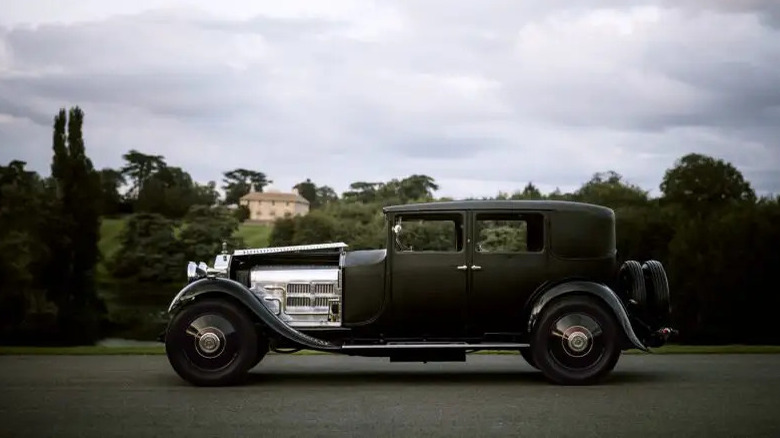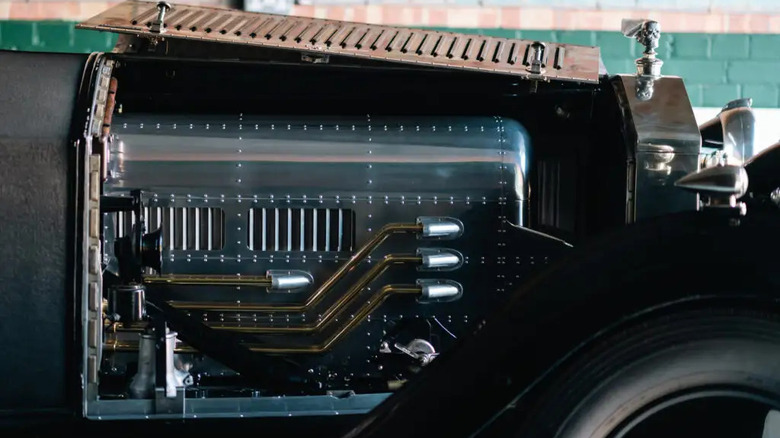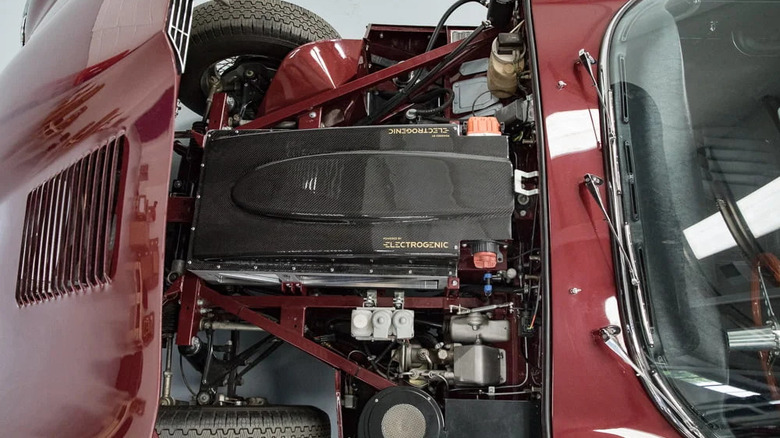Jason Momoa's Rolls-Royce: An Iconic 1929 Phantom II Made Electric
When you think of an Electric Rolls-Royce, the new Specter is probably what comes to mind. It's a luxury coupe for the 2020s, with over 580hp of grunt courtesy of a pair of electric motors, exquisite styling, and that floaty, sailing feeling that makes the high-end vehicles such a unique driving experience. What probably doesn't spring to mind is a Rolls-Royce Phantom II, a car from the late 1920s. The Phantom II was built at a time when smoking was good for you, coal warmed your house, and only 15 states required you to undertake some kind of examination before handing over a driver's license.
Fewer than 1,700 Rolls Royce Phantom IIs were assembled during the vehicle's six-year run, and not all of them will have survived the 96 years that have passed since. However, one that did is in the possession of "Game of Thrones" actor Jason Momoa. The actor who played Aquaman has managed to bring his classic Rolls into the 21st century with a full electric conversion. But while the powertrain might have changed, plenty of the Phantom II's classic characteristics are still haunting the vintage vehicle.
One thing has stayed the same on Momoa's Rolls-Royce
Rolls-Royce has a reputation for many things, but the lack of noise they produce is one of their most famous features. While electric motors being quiet is a given, and cramming enough insulation into an engine compartment to silence a truck-sized six-cylinder or a hefty V-12 is arguably more impressive — it's refreshing to know that the "Aquaman" star's Phantom is as mute as the spirit it draws its name from.
The motors also give the classic a very modern amount of grunt, 201 horsepower to be exact, which is more than four times what its original 96-year-old engine produced when new. The conversion comes with three drive modes, though "Sport" mode is a strange choice for a car built in 1929 with very narrow wheels, and it's interesting to see how the limited rubber will respond to a moderately powerful motor with an aggressive throttle response.
As for range, the current rough estimate is 150 miles. Though electric range can vary greatly with things like the amount of weight a vehicle is carrying, the surface it's driving on, and even the thickness of the air its driving through all playing a part.
Other original features have been preserved
While the vehicle has a very modern powertrain, most of its features have either been preserved or modified to work with the new motor while staying as original as possible. Rolls Royces are still known for their bespoke features and handmade elements, but back in the day, all cars were expertly crafted by hand anyway. The 1929 Phantom II is no exception and features exquisite coachwork courtesy of HJ Mulliner & Co. This doesn't appear to have been touched as there is no need to, and to do so would be akin to spraypainting a Florida orange tan onto the Mona Lisa. All they've really done is add a voicebox in the form of a sound system buried beneath the Prohibition-Era paneling.
If anything, the Roaring 20's aesthetic has been added to the vehicle's battery pack itself. It's contained in a sort of SteamPunk-esque steel box, with copper pipes running from it. The fuel gauge has also been adapted into a charge gauge so you can see exactly how much battery is left. The braking system has also been preserved, in a way. Some components have been added to make regenerative braking possible, as any battery-powered vehicle is likely to lose a lot of range and waste a lot of energy without that feature. But it's all still cable-operated, just like it was when Rolls-Royce's engineers first put the system in the car around a century ago. They have had to shuffle it around a bit, as the cables ran through an area now occupied by the battery pack, but it sums up the amount of care and attention Electrogenic has put into the project.
The company behind the conversion works on other classics
While Momoa's pride and joy may be one of Electrogenic's most high-profile projects so far, it is by no means the only time the company has brought a classic into the modern era. One of the most iconic classics to get the electrification treatment is the Porsche 356C. The standard 356 was a predecessor to the 911 and the first vehicle Ferdinand Porsche's company produced way back in 1948. The "C" variant emerged later in the vehicle's run, with the example Electrogenic worked on rolling off the production line in 1964.
Then there's the Jaguar E-Type, which is arguably the most iconic British sports coupe of all time. Gone is the iconic straight-six engine, which would offer 3.8 liter or 4.2 liters of displacement depending on the exact flavor of E-Type being electrified, and in goes a TorqX-310x 350V motor, which can hit 60 mph in first gear, and do so in 6.8 seconds. You can then proceed to second, third, and fourth as the new electric motor can be attached to the E-Type's original gearbox. While a purist would consider this sacrilege, those on the fence may be swayed by the chance to keep something like a Moss Box functional.
There are many other classics that Electrogenic has worked on and will work on; these are just a few standouts from the company's greatest hits. And while the electric side of things is a modern take on things, there's nothing new about giving a classic a bit of an engine upgrade.



